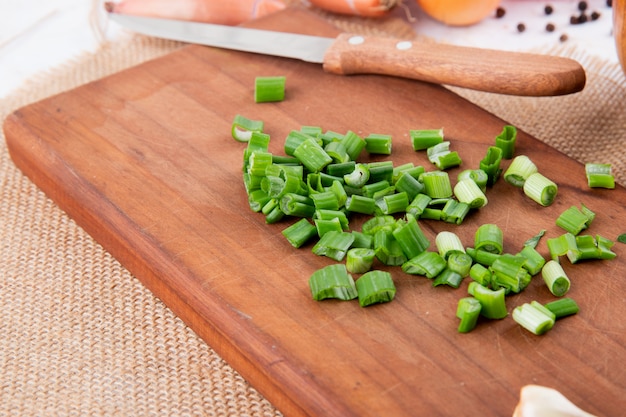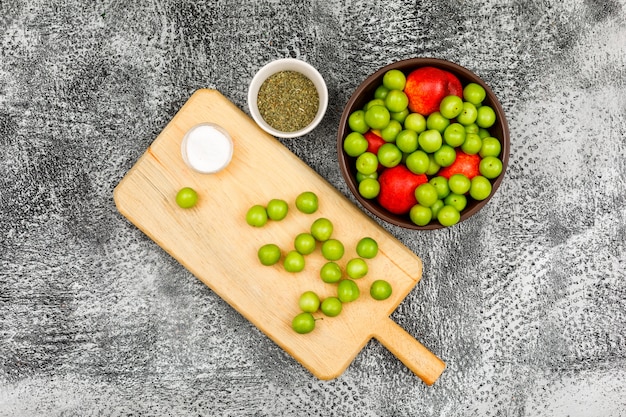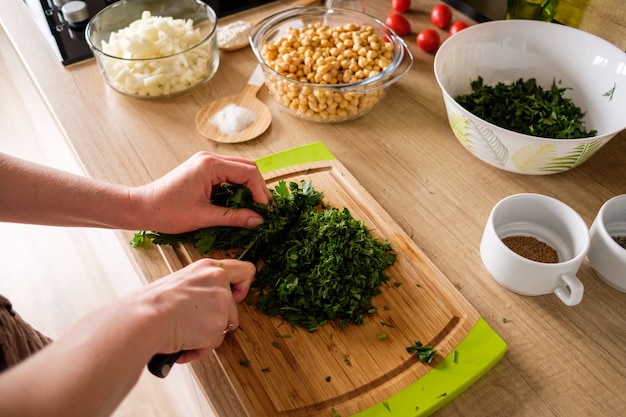Ah, peas. Just the word conjures up images of plump, green pods bursting with sweet, juicy goodness. Not those sad, little, frozen things you find in the supermarket, no, I'm talking about the real deal. The kind you can only get from your own garden or a local farmer's market. There's something truly magical about fresh peas, isn't there? That vibrant green colour, the satisfying snap when you bite into a pod, the explosion of flavour… it's just pure joy. And they're so versatile! You can eat them raw in salads, add them to stir-fries, or transform them into delicious soups and stews.
Now, whether you're a seasoned gardener or just starting out, this guide will take you on a journey from seed to table. We'll cover everything you need to know about growing, harvesting, and cooking fresh peas. I'll be sharing my own tips and tricks, along with some personal anecdotes – you know, the good, the bad, and the downright embarrassing moments that come with gardening.
Part 1: Choosing the Right Pea Variety

The first step is choosing the right pea variety. I know, it can be overwhelming with so many options out there! You've got your shelling peas, your snap peas, and your snow peas. It's a lot to take in, but don't worry, I'm here to break it down for you.
Shelling Peas
These are the classic peas you picture when someone says "peas." They have large pods with smaller, round peas inside. They're usually sweeter and more flavorful than the other types and are perfect for shelling and using in dishes like pea soup or a classic pea and ham. My personal favourite shelling pea variety is "Wando" – it's a real workhorse, producing tons of delicious peas every year.
Snap Peas
Snap peas are best eaten whole, pod and all. Think of them like a little crunchy treat. They have larger, flatter pods with sweeter, more tender peas inside. Their crispy texture adds a wonderful crunch to salads and stir-fries. My kids love them, and they're always begging for more when I make them.
Snow Peas
Snow peas are another favourite, especially for adding a touch of elegance to a dish. They have thin, flat pods with a delicate flavour, a bit more subtle than snap peas. They're perfect for stir-fries and salads, and their beautiful, light green colour adds a touch of sophistication to any plate.
Part 2: planting peas

Now, let's get those peas in the ground! It's a simple process, but there are a few things to keep in mind to ensure a successful harvest.
When to Plant
The best time to plant peas depends on your location, but generally, you can sow them in early spring as soon as the ground is workable. Here in the UK, that usually means March or April. The soil should be cool but not freezing. If you want a second harvest, you can plant them again in late summer for an autumn crop. Just make sure the ground is well-drained and the soil is warm enough.
Where to Plant
Peas thrive in a sunny spot, but they can also tolerate some shade, especially in hotter climates. Make sure the soil is well-drained and enriched with compost. A good, well-rotted compost will give your peas the nutrients they need to grow strong and healthy. If you're planting in a container, use a good quality potting mix. I find planting in rows makes it easier to harvest later on.
How to Plant
Dig a trench about 2 inches deep and sow your pea seeds about 2 inches apart. Then, cover the seeds with soil and water them well. You can also use pea netting to support your plants as they grow. This will help them stay upright and prevent them from falling over.
Part 3: Caring for your Pea Plants

Once your peas have sprouted, you'll need to give them a little love to help them thrive.
Watering
Peas need regular watering, especially when they're young and starting to grow. Aim to water them deeply, but avoid overwatering. I usually check the soil moisture with my finger – if it feels dry, it's time for a good watering. You want to keep the soil consistently moist but not soggy.
Fertilising
Peas are nitrogen-fixing plants, meaning they can produce their own nitrogen. But, a little bit of fertiliser can help give them a boost. I use a balanced liquid fertiliser every couple of weeks. This will help them grow strong and produce plenty of pods.
Pest Control
Pea plants can be susceptible to pests like aphids and slugs. Keep an eye out for any signs of pests and take action early on. A good organic option is to use a mixture of soap and water or introduce ladybugs to your garden - they love to feast on aphids! You can also try hand-picking slugs and snails in the evening.
Part 4: Harvesting Fresh Peas
Now comes the fun part – harvesting those delicious peas! You'll know your peas are ready to pick when the pods are full and plump.
Shelling Peas
For shelling peas, pick the pods when they're still slightly green and firm. If you wait too long, they'll become overripe and have a starchy taste. To shell your peas, simply snap the pods off the vine and pop them open. You can do this with your fingers or use a pea sheller for a quicker and easier method.
Snap Peas and Snow Peas
For snap peas and snow peas, pick them when the pods are young and tender. They should be firm to the touch and have a bright green colour. You can eat them raw or cooked, and they're great added to salads, stir-fries, or even just enjoyed on their own.
Tips for Harvesting
To keep your plants producing, pick the pods regularly. This will encourage the plants to produce more flowers and pods. When you're harvesting your peas, be careful not to damage the vine. And if you see any pods that are starting to turn yellow, remove them so the plant can focus its energy on producing new ones.
Part 5: Storing Fresh Peas
Now that you've got those beautiful, fresh peas, you need to store them properly to keep them fresh and delicious.
Shelling Peas
Once you've shelled your peas, store them in an airtight container in the refrigerator. They'll stay fresh for up to 3 days.
Snap Peas and Snow Peas
Snap peas and snow peas can be stored in a plastic bag in the refrigerator for up to 5 days.
Freezing Peas
If you want to store your peas for longer, you can freeze them. To freeze shelled peas, blanch them in boiling water for 2 minutes, then drain and plunge them into ice water. This stops the cooking process and preserves their colour and flavour. Once they're cooled, spread them out on a baking sheet and freeze for a few hours. Then, transfer them to freezer bags and freeze for up to 12 months.
Part 6: Cooking Fresh Peas
Finally, it's time to cook those delicious peas! There are so many different ways to cook peas, but here are a few of my favorites.
Steaming
Steaming is a great way to cook peas because it preserves their bright green colour and delicate flavour. Simply add a few inches of water to a saucepan, bring it to a boil, and place a steamer basket over the water. Add your peas to the basket and steam them for 3-5 minutes, or until tender.
Boiling
Boiling is another simple way to cook peas. Add them to a pot of boiling water and cook for 2-3 minutes, or until tender. Don't overcook them, or they'll become mushy.
Sautéing
Sautéing peas is a quick and easy way to cook them, and it adds a lovely depth of flavour. Simply heat some olive oil in a pan over medium heat and add your peas. Cook them for 3-5 minutes, or until they're tender and slightly caramelized.
Roasted Peas
For a different flavour profile, try roasting your peas. Toss them with olive oil, salt, and pepper, then spread them on a baking sheet and roast at 400°F (200°C) for 15-20 minutes, or until tender and slightly browned.
Part 7: Delicious pea recipes
Now that you know how to cook fresh peas, let's get those tastebuds tingling with some amazing recipes.
Classic Pea Soup
This is a classic for a reason. It's simple, comforting, and incredibly delicious.
| Ingredients: | Instructions: |
|---|---|
|
|
Pea and Mint Salad
This is a light and refreshing salad that's perfect for a summer lunch or dinner.
| Ingredients: | Instructions: |
|---|---|
|
|
Pea and Pancetta Pasta
This is a simple and satisfying pasta dish that's perfect for a weeknight meal.
| Ingredients: | Instructions: |
|---|---|
|
|
Part 8: FAQs
Now, I've been talking about peas for ages, so let's address some of the common questions I get about them.
1. What is the best way to get rid of aphids on my pea plants?
I've definitely had my fair share of aphid battles. A good organic solution is to use a mixture of soap and water. Simply mix a few drops of dish soap with a gallon of water and spray it on the plants. This will suffocate the aphids and protect your peas. Another option is to introduce ladybugs to your garden. They're natural predators of aphids and will help keep them under control. You can also try a strong jet of water to blast them off the plants.
2. When is the best time to harvest peas for freezing?
You want to freeze peas while they're at their peak flavour and sweetness. So, harvest your peas when they're young and tender. If you're freezing shelling peas, pick the pods when they're just starting to plump up but still firm to the touch. For snap peas and snow peas, harvest them when the pods are young and tender, but not too thin.
3. Can I grow peas in a container?
Absolutely! growing peas in a container is a great option for those with limited garden space. Choose a container that's at least 12 inches deep and wide. Use a good quality potting mix and make sure you provide support for the plants as they grow. You can even try growing dwarf pea varieties, which are specifically designed for container gardening.
4. Do peas need to be cooked before freezing?
Yes, it's best to blanch peas before freezing them. Blanching helps preserve their colour and flavour, and prevents them from becoming mushy when you thaw them. Simply drop the peas into boiling water for 2 minutes, then drain them and plunge them into ice water to stop the cooking process. Then, dry them thoroughly and freeze them.
5. What is the difference between sugar snap peas and snow peas?
Both sugar snap peas and snow peas are eaten whole, pod and all. But, there are a few key differences. Sugar snap peas have larger, flatter pods with sweeter, more tender peas inside. They also have a slight crunch to them. Snow peas, on the other hand, have thin, flat pods with a delicate flavour and a more tender texture. They're also known for their beautiful, light green colour. So, it really comes down to personal preference!
There you have it! Everything you need to know about growing, harvesting, and cooking fresh peas. So, get out there, plant some peas, and enjoy the taste of summer all year round.
Everyone is watching

Corn on the Cob: The Ultimate Guide to Perfectly Cooked Ears
Healthy MealsAh, corn on the cob. Just the name evokes images of sunny days, barbecues, and that sweet, juicy flavour that ...

Perfect Pork Roast Oven Cooking Time: A Guide to Delicious Results
Healthy MealsThere's something truly satisfying about a perfectly roasted pork. The aroma alone is enough to make your mout...

Ham Cooking Time: How Long to Bake, Smoke, or Boil a Delicious Ham
Healthy MealsAh, ham. It's a classic, isn't it? A real crowd-pleaser, especially around holidays. And when done right, it'...

Scallops: The Ultimate Guide to Perfect Cooking
Healthy MealsAh, scallops. Those delicate, sweet, and utterly delicious morsels of the sea. They hold a special place in my...

Spaghetti Squash: The Ultimate Guide to Cooking and Serving
Healthy MealsRemember that time you saw spaghetti squash at the supermarket, looking all bumpy and strange, and thought, "W...
